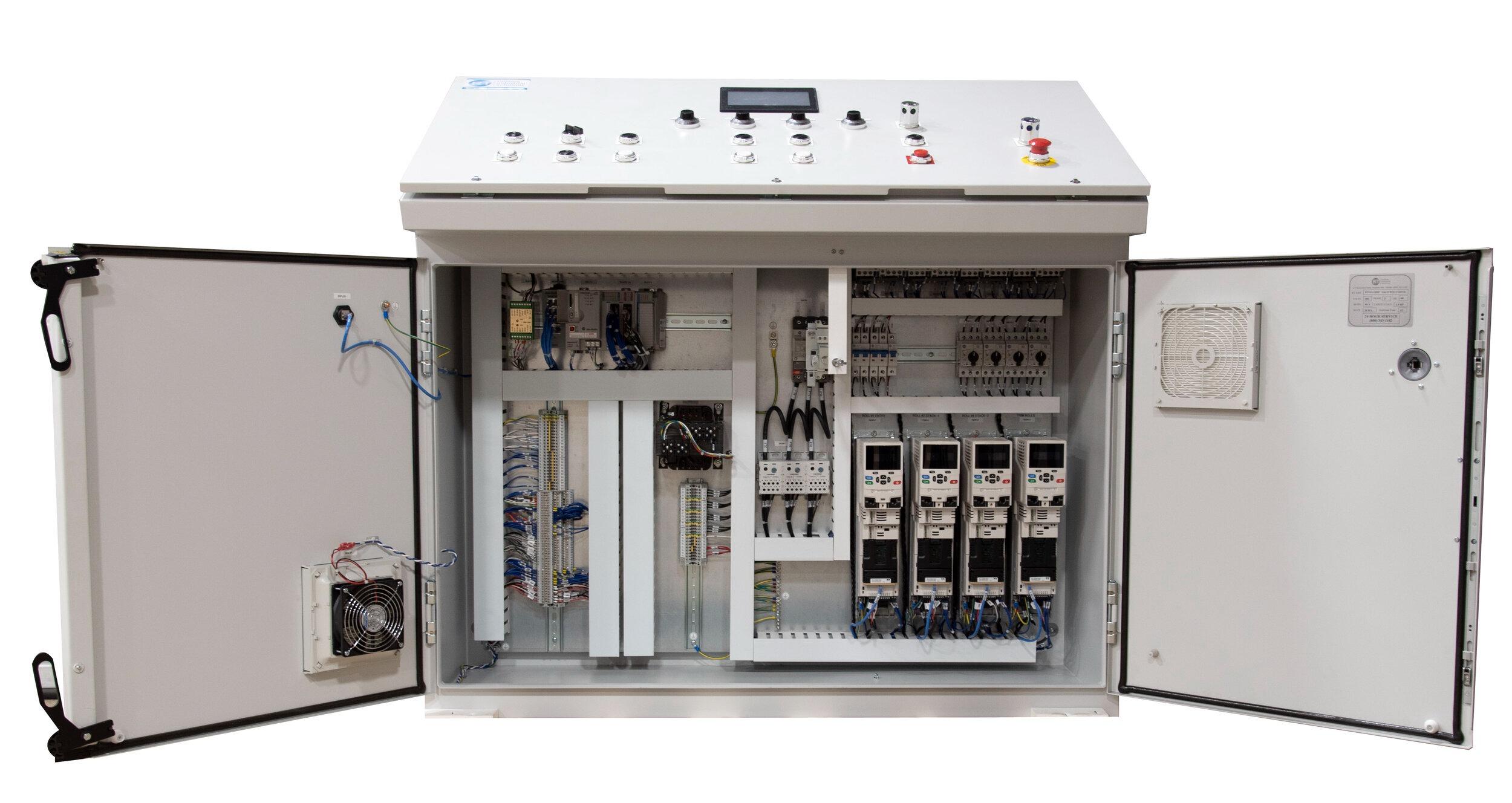Choosing the right electrical control enclosure can mean the difference between a reliable, long-lasting system and one that fails prematurely due to environmental hazards or improper design. In this edition of our Electrical Enclosure Blog, we’ll walk you through essential factors to consider when selecting enclosures for industrial, commercial, or residential applications.
Electrical enclosures serve as protective housings for sensitive electrical and electronic components. But when those enclosures are used for control systems, such as PLCs, switches, HMI panels, and other automation devices, they require extra attention to detail. Let’s dive into how to make informed decisions when it comes to electrical control enclosures.
What Is an Electrical Control Enclosure?
An electrical control enclosure is a protective cabinet that houses control components responsible for managing machines, equipment, or systems. These enclosures safeguard components from physical damage, dust, moisture, chemicals, and unauthorized access.
In industries like oil & gas, water treatment, manufacturing, and energy, control enclosures are vital to system uptime and operator safety. Selecting the appropriate design, material, and protection level ensures your system performs optimally under all conditions.
Key Considerations for Selecting an Enclosure
-
Environment and Location
The operating environment plays a critical role in determining the right enclosure. Ask the following:
-
Is the location indoor or outdoor?
-
Will the enclosure be exposed to water, dust, or corrosive agents?
-
Are there temperature extremes or UV exposure?
In harsh environments, opt for enclosures with higher NEMA or IP ratings, such as NEMA 4X or IP66, for protection against water and corrosion.
-
Material Selection
The material you choose affects durability, weight, cost, and corrosion resistance. Here are common options:
-
Stainless Steel: Ideal for food processing, marine, or chemical plants due to high corrosion resistance.
-
Polycarbonate: Lightweight, UV-resistant, and suitable for both indoor and outdoor installations.
-
Aluminum: Good for EMI/RFI shielding and has a favorable strength-to-weight ratio.
-
Fiberglass Reinforced Polyester: Non-corrosive and great for outdoor use.
-
Size and Mounting Options
Ensure the enclosure offers adequate internal space for wiring, airflow, and future expansion. Also, consider mounting styles:
-
Wall-Mount Enclosures: Space-efficient for compact control systems.
-
Floor-Standing Enclosures: Suitable for larger assemblies or multi-door setups.
-
Pole-Mounted Enclosures: Great for field installations and outdoor panels.
Use our Electrical Enclosure Blog's sizing calculators and guides to match your components with the ideal enclosure size.
-
Cooling and Ventilation
Electrical control enclosures can build up heat quickly due to active components. Without proper heat dissipation, performance may suffer or components may fail.
Options include:
-
Passive vents
-
Filter fans
-
Heat exchangers
-
Thermoelectric coolers or air conditioners
The best solution depends on enclosure size, environmental conditions, and heat load.
-
Compliance and Safety Standards
Adherence to industry standards ensures your electrical enclosure is safe and approved for its intended use. Look for certifications such as:
-
UL 508A for industrial control panels
-
NEMA (National Electrical Manufacturers Association) ratings
-
IP (Ingress Protection) ratings
-
IEC 60529 standards for global compliance
-
Accessibility and Customization
Ease of access is crucial for installation, maintenance, and upgrades. Features to consider:
-
Hinged or removable doors
-
Modular rail systems
-
Cable entry options (gland plates, knockouts, etc.)
-
Custom cutouts for displays, buttons, or ports
Some manufacturers offer pre-configured or customizable electrical control enclosures that reduce installation time and labor.
Maintenance Tips for Long-Term Reliability
To ensure long-lasting performance of your electrical control enclosures, follow these maintenance practices:
-
Regularly inspect seals and gaskets
-
Check for water ingress or condensation
-
Clean dust and debris from vents and filters
-
Tighten any loose screws, terminals, or fittings
-
Schedule thermal imaging or inspections for heat build-up
Why Our Electrical Enclosure Blog Matters
Keeping up with the latest in enclosure technology and best practices can help professionals stay compliant, improve system longevity, and reduce downtime. Our Electrical Enclosure Blog delivers:
-
How-to guides on enclosure installation and wiring
-
Reviews of enclosure brands and models
-
Case studies from real-world applications
-
Design trends in electrical and industrial enclosures
By following our blog, you’re not just selecting boxes—you’re building smarter, safer, and more efficient control systems.
Final Thoughts
Choosing the right electrical control enclosure is more than just picking a box—it’s about aligning your equipment’s needs with environmental conditions, safety standards, and future scalability. Whether you're upgrading existing infrastructure or designing a new automation system, the insights in our Electrical Enclosure Blog can guide you through every decision.
For deeper knowledge, bookmark our blog, subscribe to updates, and connect with experts who understand enclosure engineering from the inside out.
Need help with product selection or project planning? Our team is here to assist. Let the Electrical Enclosure Blog be your ultimate resource for control system success.

